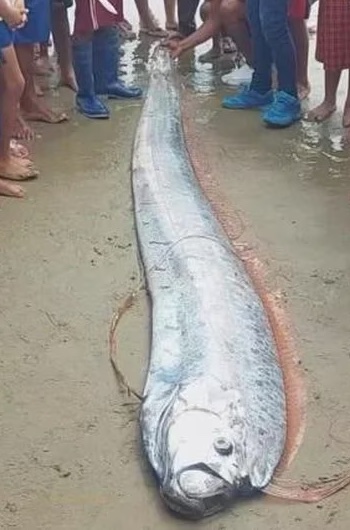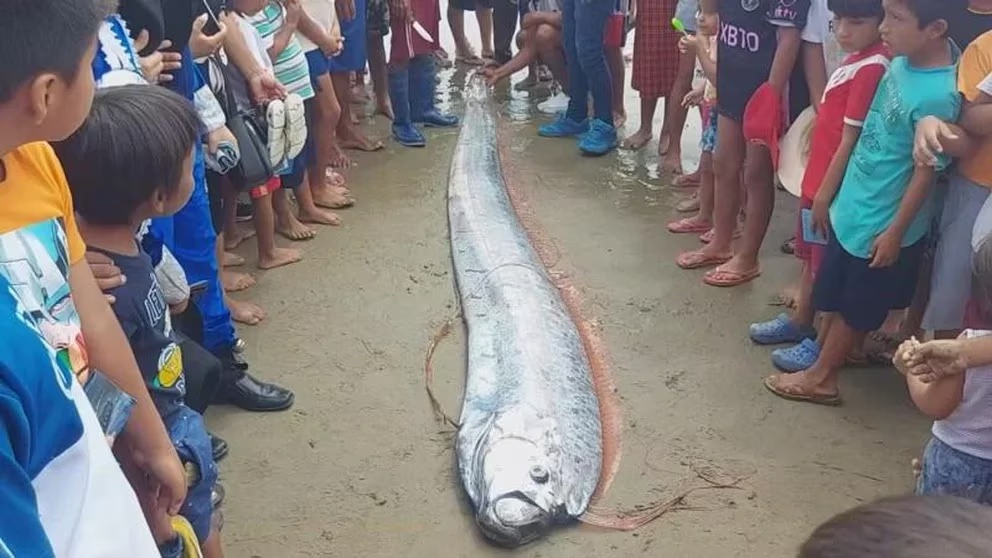An enormous deep-sea creature known as the ‘earthquake fish’ has washed up on a bustling beach, leaving children and onlookers stunned.
Measuring an impressive 13 feet (4 metres) in length, the oarfish, often regarded as a ‘harbinger of doom,’ was discovered alive by beachgoers who attempted to return it to the sea when they noticed it struggling to breathe through its gills.
Tragically, the creature, identified as a giant oarfish (Regalecus glesne), succumbed to its fate on Cancas Beach in Punta Sal, Tumbes Province, Peru, over the weekend.
A local resident recounted the incident to the media, stating, “We noticed it was beached here on the shore. The fishermen here were not afraid to touch it and tried to return it to the sea. However, it was destined to die.”

Images and videos of the event quickly went viral, amassing 129,100 views and numerous comments. Many viewers linked the oarfish’s appearance to impending catastrophes and earthquakes, fueling superstitions about the creature’s connection to natural disasters.
Oarfish, resembling mythical ‘sea serpents’ due to their size and shape, have long been associated with earthquake predictions and misfortune in Japanese mythology. This belief was reignited in 2011 after the devastating Tōhoku earthquake and tsunami, coinciding with multiple oarfish strandings in Japan in the preceding years.
However, the Ecuadoran Geophysical Institute dispelled the myth, stating that there is no scientific evidence to support the idea that oarfish predict seismic events.

These deep-sea giants, among the longest fish in the ocean, can reach up to 17 metres (56 feet) in length and weigh over 200 kilograms (441 lbs). Their scaleless bodies are covered in a slimy, silvery protective coating called guanine, and they boast a prominent dorsal fin that extends from their eyes to their tail.
Oarfish are found in various oceans, excluding the polar regions, and typically inhabit depths of up to 1,000 metres (3,280 feet). Sightings of these elusive creatures are rare, often occurring when they wash up on beaches after storms or when injured.
While the oarfish’s appearance may evoke ancient superstitions, it is important to rely on scientific knowledge and studies to understand these magnificent deep-sea dwellers accurately.





